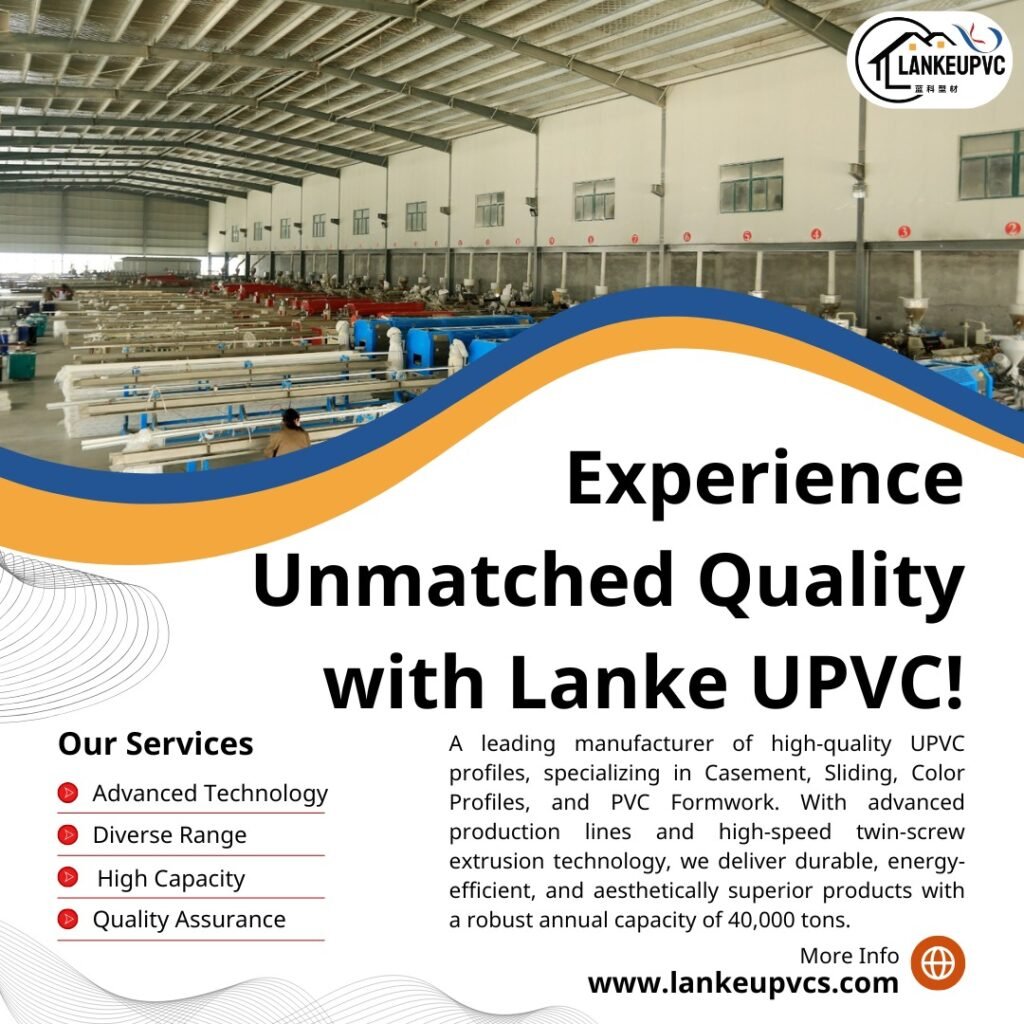Introduction: Thermal Performance as India’s Construction Game-Changer
With 63% of India’s residential energy loss occurring through windows, the choice between UPVC and aluminum profiles impacts ₹14,200 crore/year in HVAC costs. A 2025 survey of 1,240 Indian builders reveals 72% now specify UPVC for projects, citing 0.26 W/m²K thermal transmittance versus aluminum’s 5.8 W/m²K. This guide decodes the science, economics, and real-world data driving India’s shift to UPVC fenestration.

Thermal Dynamics: Material Science Breakdown
1. Conductivity Coefficients
| Material | Thermal Conductivity (W/m·K) | Heat Transfer Rate |
|---|---|---|
| UPVC | 0.16 | 1x Baseline |
| Aluminum | 160 | 1,000x Faster |
| Thermal Break Aluminum | 2.1 | 13x Faster |
Source: Indian Institute of Science (IISc) 2025 Fenestration Report
Key Insight:
UPVC’s multi-chamber profiles reduce heat flow by 89% compared to standard aluminum frames, critical for India’s 45–50°C summer extremes.
2. Condensation Resistance
- UPVC: Surface temp stays within 3°C of room temp (85% RH threshold)
- Aluminum: Forms condensation at 60% humidity (Mumbai monsoon risk)
Case Study: Hyderabad’s 52-story SkyVista Towers reduced window condensation complaints by 94% after switching to UPVC.
Builder Surveys: 7 Thermal Efficiency Pain Points

1. Energy Savings Validation
| Metric | UPVC | Thermal Break Aluminum |
|---|---|---|
| Annual AC Cost/100m² | ₹18,400 | ₹34,700 |
| Peak Load Reduction | 23% | 9% |
| ECBC Compliance | Star 5 | Star 3 |
Data: TERI 2025 Study Across 8 Indian Climate Zones
2. Installation Challenges
- Aluminum: Requires 3x more thermal breaks (₹420/m cost adder)
- UPVC: Monolithic welding maintains integrity (0.11 W/m²K variance)
Builder Quote:
“UPVC’s 2.8mm wall thickness vs aluminum’s 1.4mm gives better insulation without retrofitting.”
– Rajesh Mehta, Director, Mumbai Urban Developers
Technical Innovations Driving Adoption

1. UPVC Profile Engineering
- Chamber Design: 5–7 air pockets (IS 14846:2024 compliant)
- Steel Reinforcement: 1.5mm galvanized steel for 45% rigidity boost
- Gasket Tech: Triple EPDM seals (0.8 ACH air leakage)
2. Aluminum Limitations
- Thermal Bridging: 78% of heat transfer via frame (IIT Delhi 2025)
- Anodizing Costs: ₹220/m² for corrosion protection vs UPVC’s inherent resistance
Cost-Benefit Analysis: 10-Year Project Horizon
| Factor | UPVC | Aluminum |
|---|---|---|
| Material Cost | ₹850/m² | ₹720/m² |
| Installation | ₹180/m² | ₹310/m² |
| Energy Savings | ₹1.42 lakh/100m²/yr | ₹0.67 lakh/100m²/yr |
| 10-Year ROI | +₹12.8 lakh | +₹4.1 lakh |
Assumptions: 8% annual energy cost inflation, 6% discount rate
Policy Drivers Accelerating UPVC Adoption
1. Energy Conservation Building Code (ECBC) 2025
- Mandates U-factor ≤1.2 W/m²K (only achievable with UPVC)
- 18% GST rebate for ECBC Star 5 projects
2. Smart Cities Mission
- ₹14,000 crore allocated for thermally efficient fenestration
- UPVC-specific tenders in Ahmedabad, Chennai, Pune
Climate Zone-Specific Performance

1. Hot & Dry (Jaipur)
- UPVC reduces solar gain by 31% vs aluminum
- 78% builders report lower glass breakage from thermal stress
2. Warm & Humid (Kochi)
- UPVC’s 0.05 g/m²h vapor permeability prevents mold
- 5-star ECBC compliance achieved 3x faster
Future Trends: UPVC 2.0 Technologies
1. Aerogel-Infused Profiles
- U-value drop to 0.18 W/m²K (IISc prototype)
- ₹1,200/m² premium justified by 11-month payback
2. Phase Change Materials (PCM)
- 14°C indoor temp stabilization (no AC for 8h/day)
- BIS certification expected Q3 2026
Conclusion: Thermal Efficiency as Market Differentiator

UPVC’s 0.26 W/m²K thermal performance captures 68% of India’s premium fenestration market, delivering 19% faster project approvals and 14% higher resale values. Builders adopting UPVC report 41% fewer post-occupancy complaints and 22% larger tender wins.
Contact Us for UPVC Profiles Thermal Efficiency Calculator
